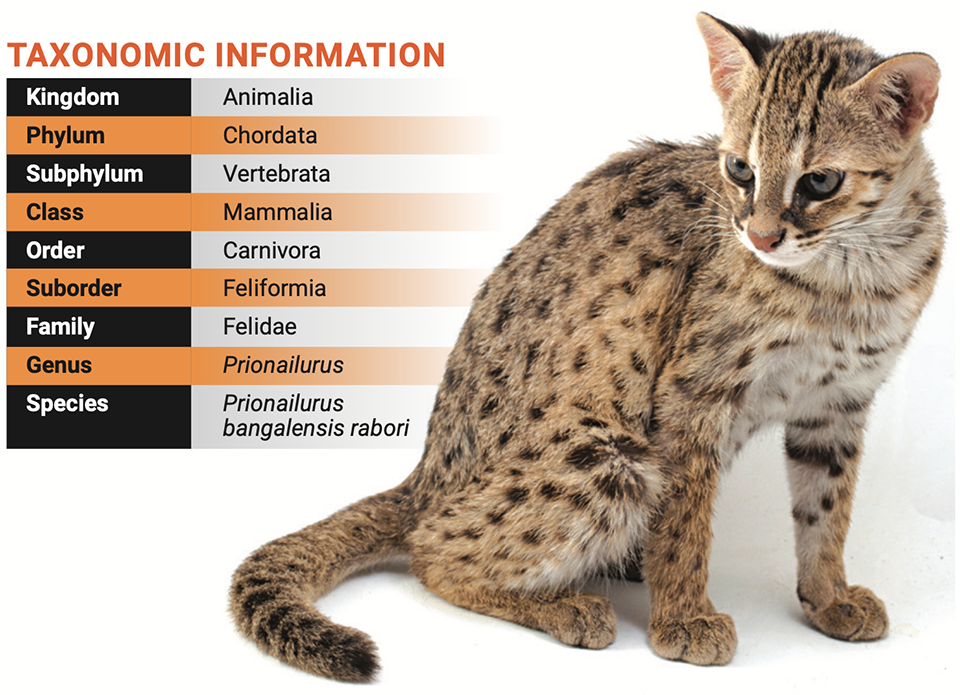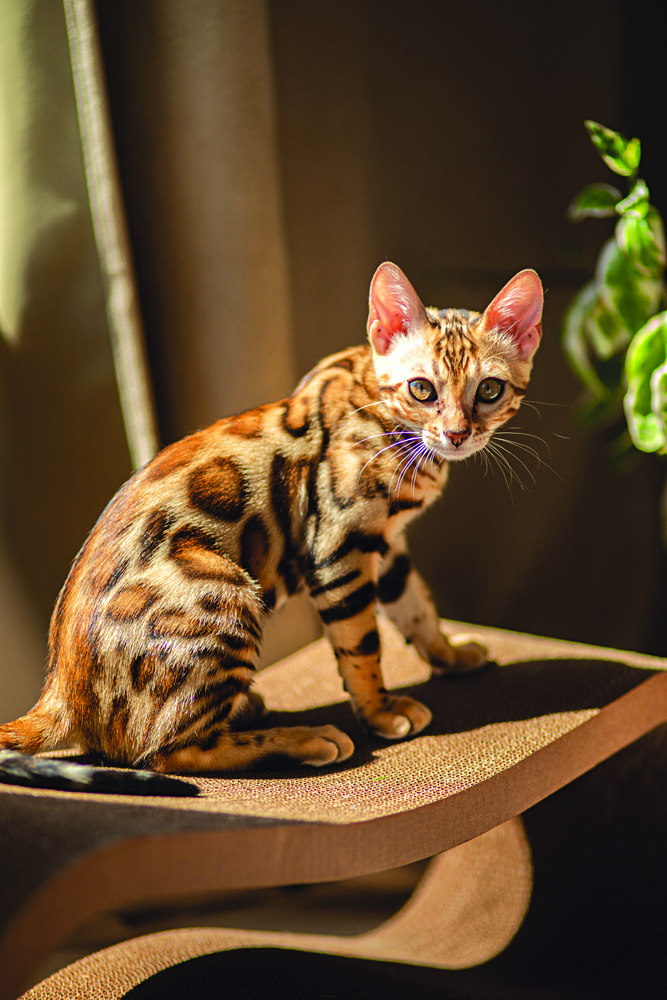A creature found dead in Panda, Antique made headlines in February 2022. The animal was identified as a Visayan Leopard Cat.

AFFECTED BY HUMAN ACTIVITY
The Visayan Leopard Cat, or Maral or Tamaral as they are locally called, is an endemic Sunda Leopard Cat population in the Philippine Islands of Negros, Cebu, Masbate, and Panay.
In general, Leopard Cats fare well wherever they are found in the world. Unfortunately, the same cannot be said of our Visayan Leopard Cats — as saddening as it was to find one of them dead in Antique, perhaps it is not surprising.
Visayan Leopard Cats inhabit residual forest patches, their once lush home now almost completely gone to make way for human development.
There have also been reported sightings in sugarcane plantations in Cebu.

PERHAPS A SWEET TOOTH?
Due to their decreasing natural forest habitats, Visayan Leopard Cats find themselves in sugarcane fields and fowl farms, leading villagers to assume that Leopard Cats consume sugarcane or hunt smaller animals, which is not necessarily accurate.
Sugarcane development, which attracts Rodents, influences the presence of Visayan Leopard Cats in sugarcane fields. Small mammals are the most common prey of Visayan Leopard Cats. Contrary to popular belief, Visayan Leopard Cats’ diets are not limited to only birds or plant debris, according to a 2011 study by Desamarie Antonette Fernandez and Anna Pauline O de Guia, published in the journal Asia Life Sciences.

HARSHER MATING CALLS
During mating season, the toms (male cats) give a somewhat harsher call to potential mates compared to their domestic cousins.
About the size of a domestic Cat, Visayan Leopard Cats are polygynous when it comes to mating — that means that the males often mate with more than one female at a given period. A male Visayan Leopard Cat’s home range can sometimes overlap with that of several female Cats.
Leopard Cats in Southeast Asia can mate at any time of year, although those in northern latitudes usually breed between January and March.
DEMANDING
During mating season, male Visayan Leopard Cats give a somewhat harsher call to potential mates compared to their domestic cousins. Rawr!

LEOPARD CAT REPRODUCTION
After a 65- to 70-day gestation period, the female gives birth to one to four offspring, with an average of two to three offspring per litter. Leopard Cats have closed eyes when they are born, but they open within ten days.
The female — occasionally the male as well — is responsible for taking care of the young. At the age of eight months, the animals are entirely independent, and at the age of eighteen months, they are sexually mature.
Due to their elusive nature and declining numbers, the lifespan of these majestic animals is quite difficult to determine.
FRIEND OR FOOD?
Visayan Leopard Cats, despite their vulnerable status, are hunted by locals for their flesh. What do you think can be done to ensure their safety?

“CATTITUDE”
Visayan Leopard Cats are solitary creatures who hunt at night, traversing their territory in search of prey. During the day, they spend much of their time resting in trees.
They use scent marks or scratch trees within their home range to designate their territory. The size of their territory can vary based on variables, including accessible habitat and resource competition in a specific area.
The Visayan Leopard Cat is an exceptional climber and swimmer. Normally, they are silent; however, they do purr and cry like domestic cats on occasion.
THEY SURE LOVE HEIGHTS!
If you end up in the territory of a Visayan Leopard Cat and you’re lucky, you might find one lounging on a branch atop a tree. If you do, please do not disturb them — and you might as well forget flash photography!
FILED UNDER VULNERABLE
The Visayan Leopard Cat was designated as vulnerable on the IUCN Red List in 2008. Although no definitive reports have been made regarding their population status, it is still likely to be declining.
Unfortunately, the farmers in the region like eating the meat of the Visayan Leopard Cat as a delicacy, so many of them are killed for food.

TRACE YOUR ROOTS
Leopard Cats have been mated with domestic Cats since the 1960s, resulting in a hybrid species known as the Bengal Cat, as explained by Reyna Gobel in a 2017 article for CBS News. Some have kept these Bengal Cats as companion animals, a practice that remains controversial among some animal-loving circles.

CAT-ASTROPHIC EVENT
With the decline in the population of the Visayan Leopard Cat mostly attributed to human activity, the responsibility of bringing them back from the brink of extinction falls on humans as well.
While the situation certainly seems bleak, there are fortunately individuals and groups doing their best to ensure the safety of both wildlife and domestic animals alike.

PURR-FECT EFFORT!
Mari-it Wildlife and Conservation Park, located in Lambunao, Iloilo, is the first conservation and rescue park in Panay Island, as reported by Perla Lena in her 2019 article for the Philippine News Agency. The park hosts various animals, including the Visayan Leopard Cats.
Many of these animals were rescued from wildlife trafficking, poaching, and also from residential areas that have encroached on these felines’ territories on the island of Panay in the Visayas. They are expected to go extinct in five to ten years if left in the wild, based on Arnel Murga’s 2019 report for Mongabay.

WHAT TO DO IF YOU SPOT THIS FELINE
Should you happen to come across the Visayan Leopard Cat, it would be wise to leave them be, as they are solitary creatures by nature. Poaching, not to mention the constant destruction of their habitat, has made the Visayan Leopard Cat wary of humans.
A good follow-up to the above would be to report your sighting to the proper authorities, such as organizations concerned with the conservation of the Visayan Leopard Cat, such as Mari-it.
In solidarity with conservation efforts, one can show our support by donating to these organizations or, if one can, allot time to volunteer — only with the thumbs-up and approval of respective authorities, of course, as one might need training before engaging these wild felines.
It is worth remembering that some things are better left untouched, as the price to pay is not worth it for human development. There is a way to move forward, at the same time coexist with other creatures.
As author Michael Scott said in one of his fantasy novels, “And in their rush to create wonders, they have ignored the wonders all around them, ignored the mysteries, the beauty.”






